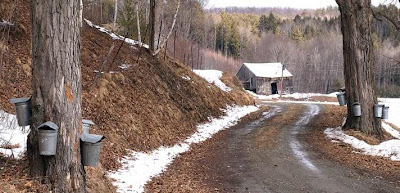 00000000000
00000000000
Tea is valuable chiefly for its warming and comforting qualities. Taken in moderation, it acts partly as a sedative, partly as a stimulant, arresting the destruction of tissue, and seeming to invigorate the whole nervous system. The water in it, even if impure, is made wholesome by boiling, and the milk and sugar give a certain amount of real nourishment. Nervous headaches are often cured by it, and it has, like coffee, been used as an antidote in opium-poisoning.
Pass beyond the point of moderation, and it becomes an irritant, precisely in the same way that an overdose of morphine will, instead of putting to sleep, for just so much longer time prevent any sleep at all. The woman who can not eat, and who braces her nerves with a cup of green tea,—the most powerful form of the herb,—is doing a deeper wrong than she may be able to believe. The immediate effect is delightful. Lightness, exhilaration, and sense of energy are all there; but the re-action comes surely, and only a stronger dose next time accomplishes the end desired. Nervous headaches, hysteria in its thousand forms, palpitations, and the long train of nervous symptoms, own inordinate tea and coffee drinking as their parent. Taken in reasonable amounts, tea can not be said to be hurtful; and the medium qualities, carefully prepared, often make a more wholesome tea than that of the highest price, the harmful properties being strongest in the best. If the water is soft, it should be used as soon as boiled, boiling causing all the gases which give flavor to water to escape. In hard water, boiling softens it. In all cases the water must be fresh, and poured boiling upon the proper portion of tea,—the teapot having first been well scalded with boiling water. Never boil any tea but English-breakfast tea; for all others, simple steeping gives the drink in perfection.
A disregard of these rules gives one the rank, black, unpleasant infusion too often offered as tea; while, if boiled in tin, it becomes a species of slow poison,—the tannic acid in the tea acting upon the metal, and producing a chemical compound whose character it is hard to determine. Various other plants possess the essential principle of tea, and are used as such; as in Paraguay, where the Brazilian holly is dried, and makes a tea very exhilarating in quality, but much more astringent.
CREAM CAKES.
One pint of boiling water in a saucepan. Melt in it a piece of butter the size of an egg. Add half a teaspoonful of salt. While still boiling, stir in one large cup of flour, and cook for three minutes. Take from the fire; cool ten minutes; then break in, one by one, six eggs, and beat till smooth. Have muffin-pans buttered, or large baking-sheets. Drop a spoonful of the mixture on them, allowing room to spread, and bake half an hour in a quick oven. Cool on a sieve, and, when cool, fill with a cream made as below.
FILLING FOR CREAM CAKES.
One pint of milk, one cup of sugar, two eggs, half a cup of flour, and a piece of butter the size of a walnut.
Mix the sugar and flour, add the beaten eggs, and beat all till smooth. Stir into the boiling milk with a teaspoonful of salt, and boil for fifteen minutes. When cold, add a teaspoonful of vanilla or lemon. Make a slit in each cake, and fill with the cream. Corn-starch may be used instead of flour. This makes a very nice filling for plain cup cake baked on jelly-cake tins.
From "The Easiest Way in Housekeeping and Cooking Adapted to Domestic Use or Study in Classes" by Helen Campbell
 0
0 0
0













































